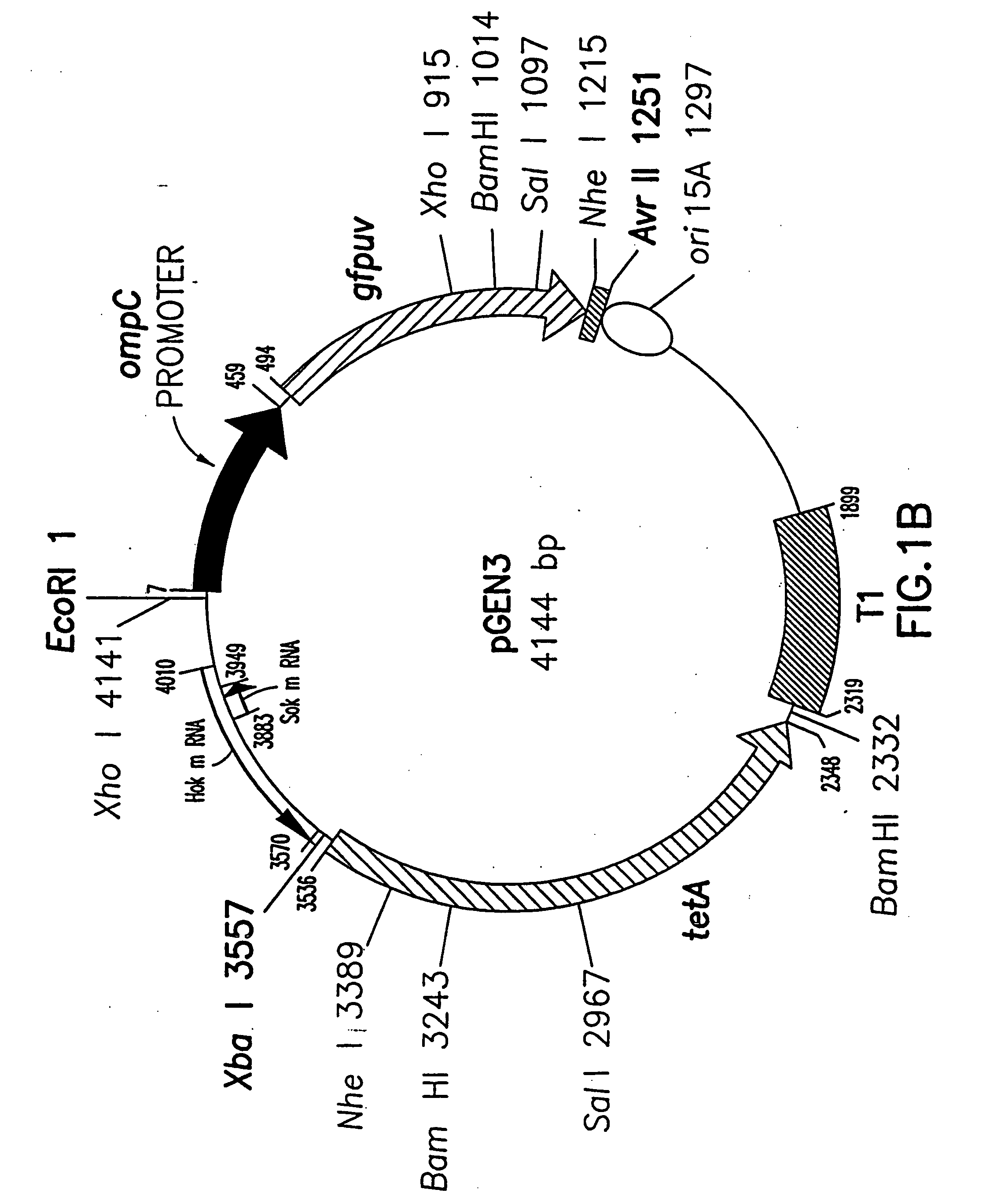Plasmid maintenance system for antigen delivery
a technology of plasmids and maintenance systems, applied in the field of expression plasmids, can solve the problems of insufficient levels of heterologous antigens to ensure an optimal immune response, foreign plasmid gene products are sometimes toxic to the host cell, manipulation involved, etc., and achieve the effect of reducing the toxicity of toxins and ensuring optimal immune respons
- Summary
- Abstract
- Description
- Claims
- Application Information
AI Technical Summary
Benefits of technology
Problems solved by technology
Method used
Image
Examples
Embodiment Construction
[0101] Bacterial live vector vaccines employ a bacterial live vector to express genes encoding protective antigens of bacterial, viral or parasitic pathogens. The bacterial protective antigens are preferably non-native to the bacterial live vector, i.e. heterologous. The bacterial live vector vaccine is administered to a host, thereby exposing the expressed antigens to the host's immune system, eliciting an immune response of appropriate character to confer immunity to the host.
[0102] In order to achieve enhanced immunogenicity, the plasmids expressing such protective antigens must be stabilized. To the inventor's knowledge, no currently available S. typhi-based Plasmid Maintenance System takes advantage of naturally occurring partition mechanisms known to improve the stability of multicopy plasmids in other strains.
[0103] The present invention provides a non-catalytic Plasmid Maintenance System for the stabilization of expression plasmids encoding foreign antigens in a S. typhi l...
PUM
| Property | Measurement | Unit |
|---|---|---|
| area | aaaaa | aaaaa |
| wavelength | aaaaa | aaaaa |
| wavelength | aaaaa | aaaaa |
Abstract
Description
Claims
Application Information
 Login to View More
Login to View More - R&D
- Intellectual Property
- Life Sciences
- Materials
- Tech Scout
- Unparalleled Data Quality
- Higher Quality Content
- 60% Fewer Hallucinations
Browse by: Latest US Patents, China's latest patents, Technical Efficacy Thesaurus, Application Domain, Technology Topic, Popular Technical Reports.
© 2025 PatSnap. All rights reserved.Legal|Privacy policy|Modern Slavery Act Transparency Statement|Sitemap|About US| Contact US: help@patsnap.com



